The kitchen sink of baseball cards has standouts and oddities
A lot of baseball cards have been released in 2013. Between Topps (MLB and MLBPA licenses), Panini (MLBPA license), Leaf (no licenses), and Upper Deck (MLBPA license but strict MLB oversight), more than 40 baseball products have been released this year. So which cards stand out from the rest? To answer that question, we’ll break down the key Mets cards from 2013 in The Essentials.
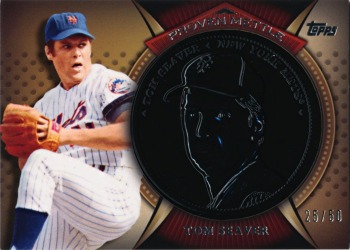
Manufactured material, like game-used memorabilia and certified autographs, traces its roots in the modern sports card era back to the late 1990s. Aside from its use as a surface for autographs though, it wasn’t until recent years that manufactured material came into its own as a hobby offering with diversity and innovation. Topps raised the bar in 2012 with premium metal manufactured relics and continued this trend into 2013.
Minor League Logos
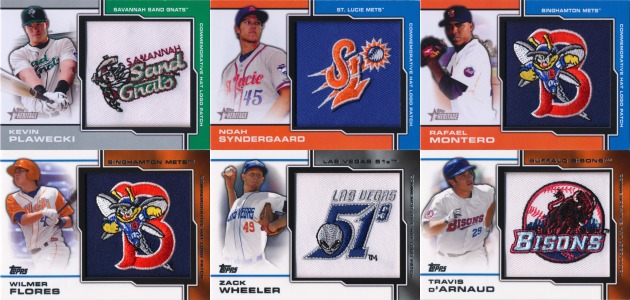
So many things wrong with that d’Arnaud card…
Back again after their debut in 2012, minor league hat logo patches from many minor league teams were included in Topps Pro Debut and Topps Heritage Minor League. Oddly, it looks like these are the exact same patches that were used in 2012. Topps must have had a few extras left over… Note the use of last year’s logos for the St. Lucie Mets and Buffalo Bisons (as for why Travis d’Arnaud is shown with the Bisons, well…). Between the two products, six Mets were featured on logo patch cards, covering most of the top prospects in the Mets farm system. Unlike last year, a consistent style was used for both sets of logo patch inserts in 2013. It would be nice to see Topps continue this moving forward to create a running set with top prospects for years to come. The logos need a bit of an update though.
Mascot Patches
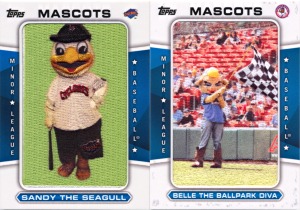
Not shown: Buster T. Bison. Not sure I even want to…
New for 2013, Topps Pro Debut added patch cards for various minor league mascots. Cyclones mascot Sandy the Seagull was the only mascot from a current Mets farm team featured in this set, but Buffalo Bisons mascots Buster T. Bison and Belle the Ballpark Diva were shown in their 2012 incarnations, so I guess they count (though I wouldn’t exactly call them essential). I’m not quite sold on these just yet.
Retail Commemorative Patches
At the major league level, the bulk of the manufactured material was released in the base Topps products: Topps Series 1, Topps Series 2, and Topps Update. Many of those were the cracker jack-style prize inside $20 retail blasters, included as a consolation prize for spending $20 on a few packs of cards with terrible odds on getting anything good (with most of those “good” cards not worth much of anything anyway). Of course, with typical selling prices between $5 and $25, they sometimes make you feel like a bit of a chump for spending $100 a pop on hobby jumbo boxes where the only decent card is a manufactured relic that sells for between $5 and $25… But I digress.
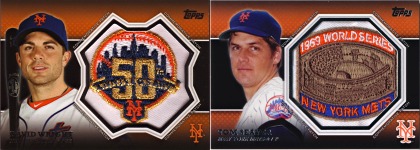
The first of the retail manufactured patch sets feature miniature versions of commemorative shoulder patches or anything else Topps felt like making. Only two Mets were included here, David Wright with the Mets 50th anniversary patch and Tom Seaver with the 1969 World Series patch. I guess these can get filed away with all of the similar cards Topps has produced over the last few years.
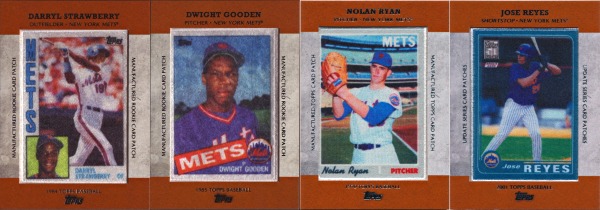
The second retail manufactured patch set consists of framed mini card patches featuring an assortment of rookie cards and other random stuff. For the Mets, that meant rookie card patches from Darryl Strawberry, Dwight Gooden, and Jose Reyes and a very off-center 1970 Topps Nolan Ryan.
Silk Collection
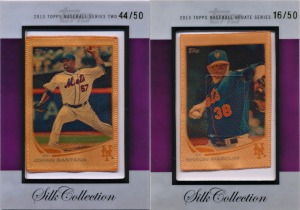
Shoulder surgery starting pitchers for the, um, DL I guess…
Honestly, I’m not really sure how to classify silk cards. They’re not typically considered relics, but they are technically manufactured material, so here they are. R.A. Dickey, David Wright, and Matt Harvey are the big Mets names with silk cards in 2013, but I don’t have any of them so here’s Johan Santana and Shaun Marcum.
Award Winner Relics
This year’s theme for hobby manufactured relics was award winners. Each card featured a tiny metal replica of one of several featured awards, including MVPs, Cy Youngs, Silver Sluggers, Rookies of the Year, World Series MVPs, etc. The best looking of the bunch were the MVP relics, but the Mets have never had an MVP.
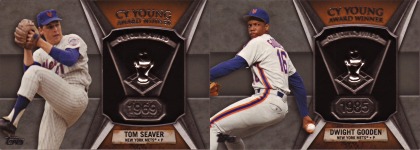
They have had a bunch of Cy Young winners though, most recently R.A. Dickey in 2012. Who was not featured in this set. Instead, we got Tom Seaver and Dwight Gooden.
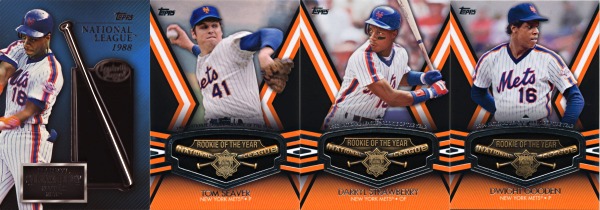
Darryl Strawberry’s Silver Slugger rounds out the three Mets featured in Series 1 with a photo that somewhat ironically crops out the bat he is swinging. Series 2 featured Mets Rookies of the Year Tom Seaver, Darryl Strawberry, and Dwight Gooden. Um, what happened to Jon Matlack? Am I the only one who remembers that he existed?
Proven Mettle Coins
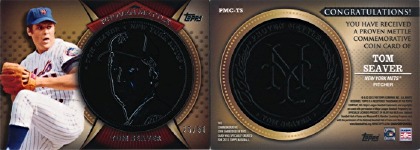
And that brings us to the last and best category of manufactured relics, the coins. Last year, Topps introduced manufactured coin relics, the first I’ve seen since some pretty lame attempts in the late ’90s that embedded what looked like amusement park tokens into cards. The Topps version uses huge coins with the card barely wrapped around them. Only one Met, Tom Seaver of course, was featured in last year’s coins. In 2013, the Proven Mettle (get it?) coins featured a three-tier parallel with copper (#d/99), wrought iron (#d/50), and steel (#d/10) versions. David Wright joins Seaver this time for a total of six Mets cards. If you only get one manufactured material card from 2013, it should be one of these coins.
Did I miss anything? Let me know in the comments.
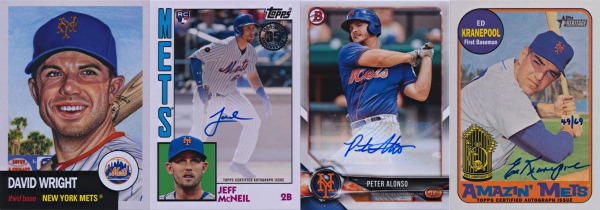 So, yeah, not much going on here these days. After a monster 2017, I took a step back in 2018 and have continued that in 2019. Keeping up with the current releases just isn’t as much of a priority for me because there’s just too damn much out there and most of it isn’t particularly interesting. After seeing what Topps did with 2019 Series 1 Jumbo, I’m not hopeful for a whole lot of value in their products this year. And with rising overhead costs on the secondary market, it’s getting harder to track down hidden gems on the low end. On the plus side, I’ve got tons of great stuff that has yet to be scanned, so I’m buried in work if I ever come up with something to put together. Not much of a plus side, but there it is.
So, yeah, not much going on here these days. After a monster 2017, I took a step back in 2018 and have continued that in 2019. Keeping up with the current releases just isn’t as much of a priority for me because there’s just too damn much out there and most of it isn’t particularly interesting. After seeing what Topps did with 2019 Series 1 Jumbo, I’m not hopeful for a whole lot of value in their products this year. And with rising overhead costs on the secondary market, it’s getting harder to track down hidden gems on the low end. On the plus side, I’ve got tons of great stuff that has yet to be scanned, so I’m buried in work if I ever come up with something to put together. Not much of a plus side, but there it is.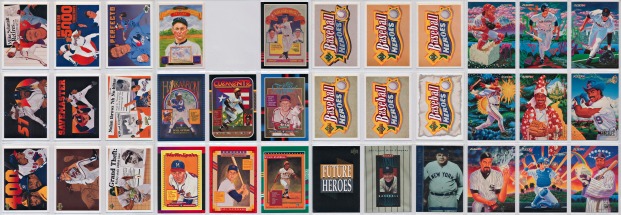
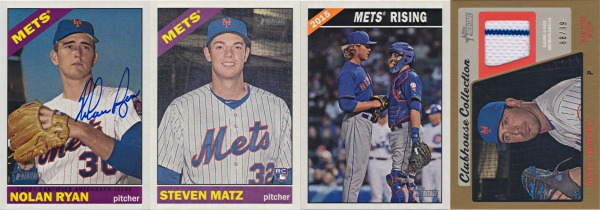
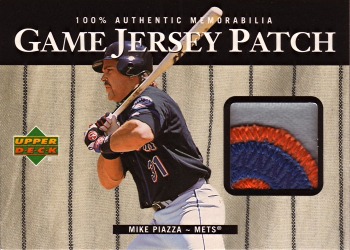
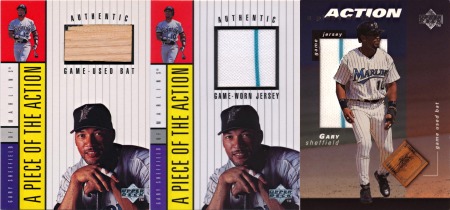
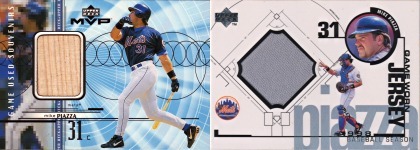
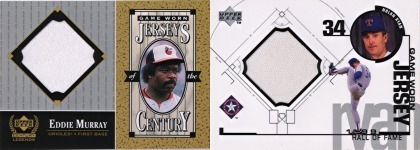
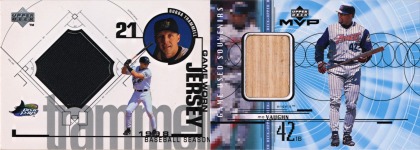

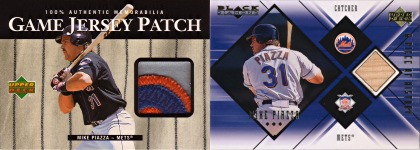

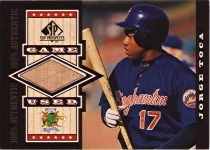

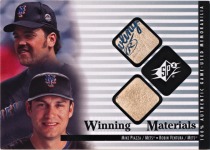









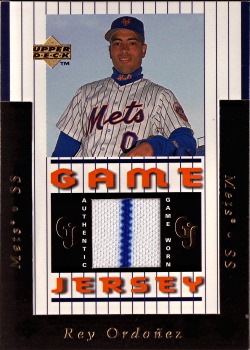
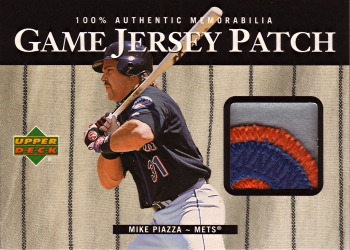
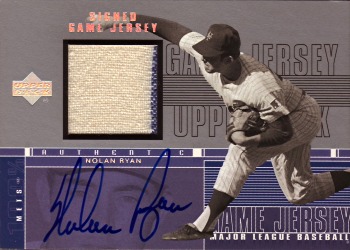
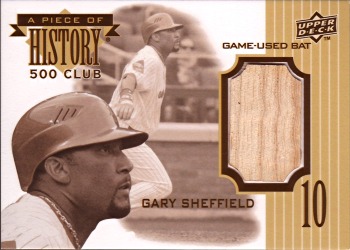
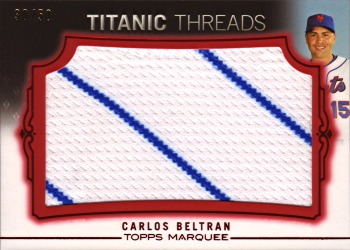
Recent Comments